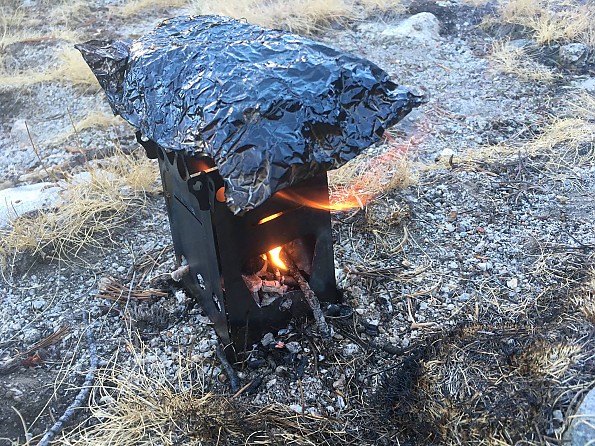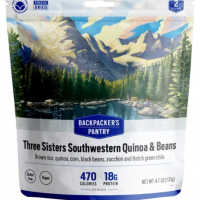Emberlit FireAnt Titanium
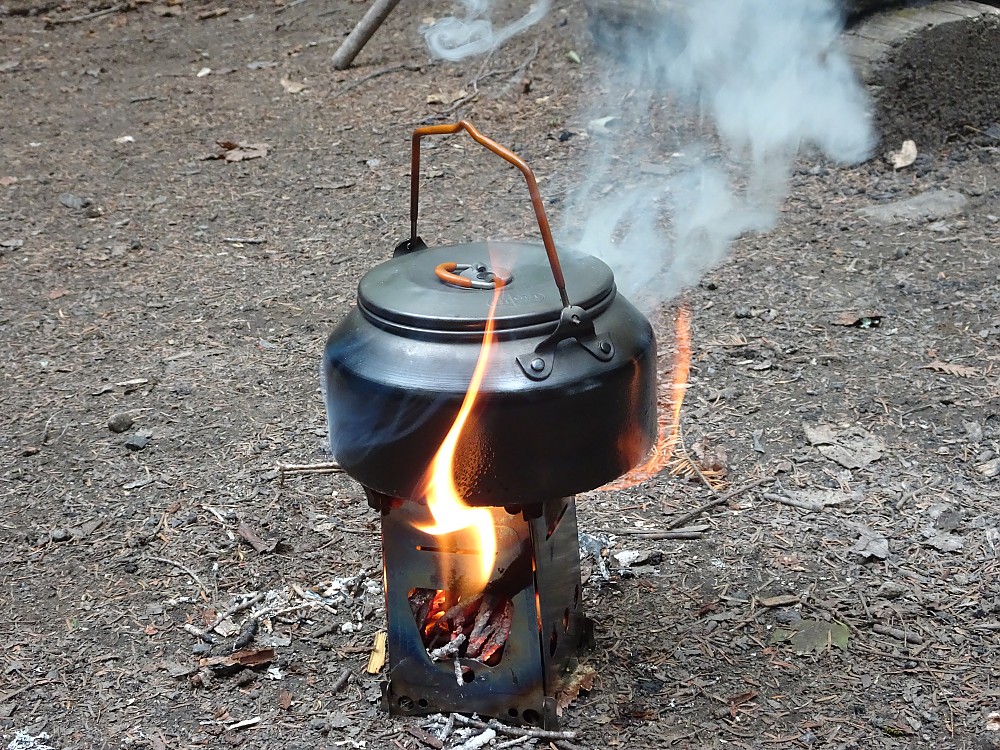
The Emberlit Fireant TI is a flat packing wood burner that can also be used with a spirit burner, solid fuel like Esbit, or alcohol gels. It can take a bit to get the hang of putting it together, but makes a solid base for pots and kettles.
Pros
- Packs flat
- Light
- Foraged fuel
- Good alcohol stove stand
Cons
- Setup can be challenging at times
- Soot mess and odor
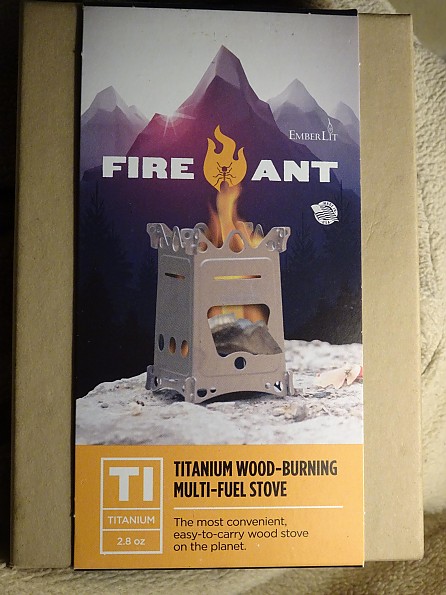
Depending on the trip, I have been carrying the Emberlit FireAnt TI as either part of my primary cooking system or as a backup for the last two years. It was a bit of an investment at the time, but has become a useful tool that has a lot of value in my pack. Let me tell you a bit about it and then I'll show you a video demonstration that should answer most any leftover questions.
Construction:
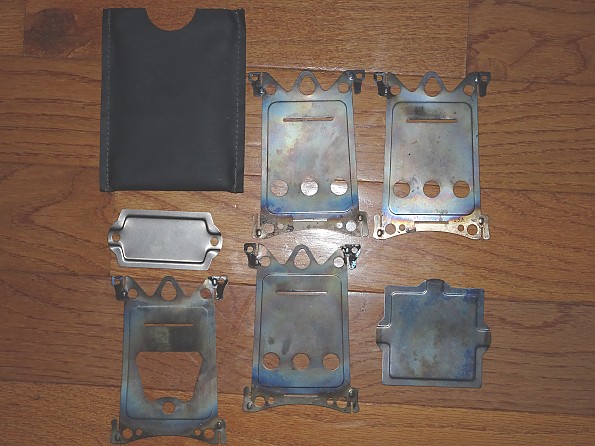
The stove pieces are stamped from thin titanium plates and come packed in a vinyl pouch to protect the sharp edges. There are three "walls," a "door," and a "floor" which make up the firebox. There is also a flat tray that can be used to hold Esbit or other solid or gel fuels.
Setup:

Setup involves lining up the pieces so they can join together. Folks with fading eyes will probably want to get their glasses on for this, at least at first. First the three walls are joined together, then the floor is inserted with its three tabs securing it to the walls before the door panel is added by securing either end. If using a spirit burner or the solid fuel tray you need to add it before the door is secured in place.
Lighting & Wind:

Generally I found lighting the FireAnt to be easy enough unless there was wind, so I am covering these two things together. Over time I found what worked best for me was to load the box with vertical sticks on top of a little kindling near the door. Lighting the kindling created fire that climbed up and into the fuel above it...most of the time heh. Too much wind at this delicate stage could snuff out the flame before it took hold.
I found that on windy days setting up behind something to break the wind was a big help. The rocks piled up to make a fire ring are often a great wind break, though a boulder or large tree work well too. On really windy days I would not light a wood fire at all. I always have alcohol and burner along with me to be safe.
Once lit, moderate breezes didn't bother the stove and seemed to actually help increase the burn rate. The air holes around the bottom of the walls create a nice chimney effect even without added air flow, but a bit of breeze pushing through increased that.
Stability & Cooking:

Stability is always a matter of matching the right pot to the stove. The Emberlit FireAnt is roughly 3" square at the top. That means tiny mugs might have to worry about falling in perhaps, but most backpacking sized pots and kettles should feel pretty solid up there.
That comes in handy not only if you are reloading the firebox with the pot on top. It also is great to have a steady platform if you are doing more than boiling water. Frying, stirring, checking on the blueberry muffins, etc, can be done without much worry about tossing it all on the ground.
If you do want to do more than just boil water simmering and baking are possible if you are willing to stay on top of the fire management. Using the right fuel and a watchful eye I have had good success baking biscuits and muffins.
Multi-Fuel:
Besides burning wood the FireAnt gives you options to burn Esbit and other solid or gel fuels on the included tray. The same slots that support that tray can also support spirit burners like Trangia's. I created a shelf that holds my Zelph Modified Starlyte at the right height so I could use the Emberlit stove as a stand.
Demonstration:
Watch this to see how the stove goes together and how I used it
Testing Conditions:
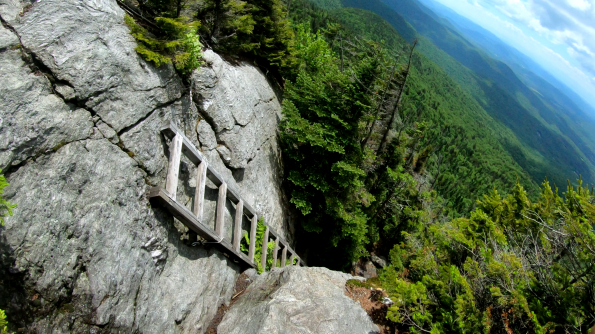
I've been using the FireAnt along with the alcohol burner as my primary cooking system for the last two years. Many hundreds of backpacking miles including the Cohos in New Hampshire and Long Trail in Vermont.
Conclusions:
I was a bit nervous when I ordered the Emberlit FireAnt due to the price and not being at all sure it was going to be of any use to me. As I continued my exploration of distance hiking I was looking for a more weight-efficient cooking system and had been playing with alcohol burners. Foraging fuel definitely has some weight advantages, but relying on it entirely didn't seem prudent considering weather and legalities. Combining the two has really worked well for me, letting me extend my fuel over longer carries.
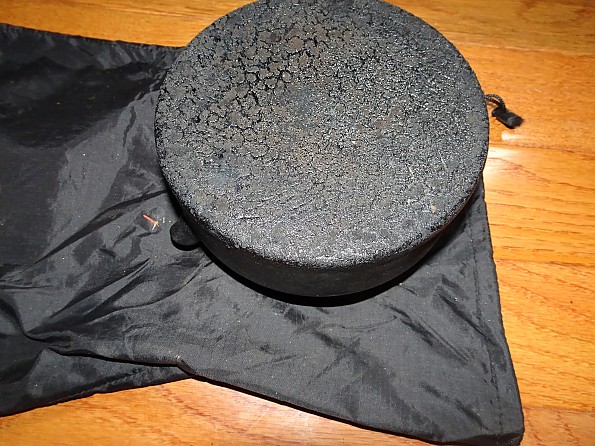
Might as well discuss the other negative and talk about soot. The stove itself shakes pretty clean after use with just a tap on a rock if anything sticks. It still smells like smoke though and that needs to be considered when packing up. The other thing that will smell like smoke is your pot or kettle and that won't just tap clean. Depending on the fuel you are burning it can leave a little or a lot of creosote, think black and tarry, which adds up over time. This definitely will bring a lot of smoke odor plus yucky smudges that won't come off easily if it rubs on things.
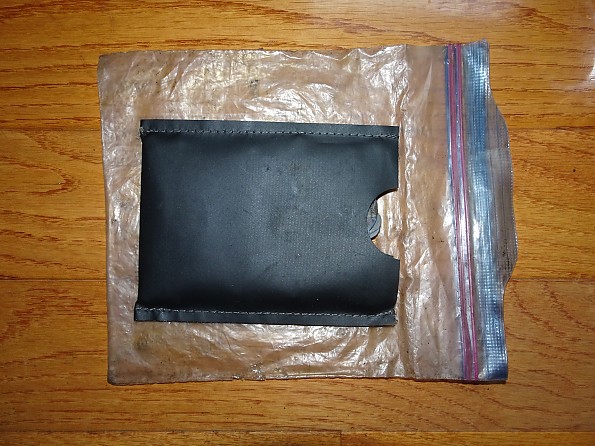
My solution for these issues is to carry the stove in a quart zip bag, that bag goes under the kettle and they get stuffed into a nylon bag that controls the mess and holds some of the odor. That bag gets stuffed into the Blazer bear canister if there's room or rides on top of the liner inside my pack.
Figuring out how I wanted to do all that took some time just like it took some time to figure out how to put the stove together fast, how to load it, how to light it. This is not the sort of kit you can just buy off the shelf and take full advantage of on day one. The usefulness expands as you learn how to use it as a tool to do what you want. It really took me over a year to really fully incorporate this into my distance kit.
As wood fires are not legal many places I really don't think relying on this as your only stove works unless you are using the Esbit or alcohol burner options in those places. Given the challenges of burning wood in bad weather I think having options is just good sense even if you are in a place that allows fire.
For my purposes the Emberlit FireAnt is a very useful tool. That usefulness is definitely situational. It can handle boiling duties for one or two, but for larger groups I prefer to use a canister to speed things up. Weather really can impact utility with wind and or wet wood adding challenges that can delay dinner.
I am pointing out issues despite the fact that I really like this stove because I want people to be aware of them. These issues don't prevent me from using and enjoying the stove because I take them into account and act accordingly. It took a while, but now I see this was definitely worth the price I paid. The FireAnt will continue to come along with me on trips long and short.
Background
This is my first packable wood stove
Source: bought it new
Price Paid: $70.59
A lightweight, compact, and sturdy little titanium stove that can burn wood, fuel tablets, or alcohol based on configuration. While it can be difficult to assemble, this wood stove is lighter in weight than comparable alcohol or gas stoves and heats just as well.
Pros
- Lightweight
- Sturdy
- Boils water quickly
- Can accommodate Esbit fuel tablets
- Can accommodate Esbit Spirit burner
Cons
- Can be difficult to assemble
- Can be difficult to light
- Can't regulate air flow
The Emberlit FireAnt is my second wood-burning camp stove (with the Vargo Hexagon being my first) and so far I have been fairly pleased with it.
WEIGHT
The Emberlit Fireant is advertised at 2.8 oz, which is a pretty outrageous claim given I own a stuff sack that weighs more. Outrageous or not, Emberlit didn't exaggerate! My Fireant came in at 2.9 oz (without the solid fuel tray or the storage pouch).
I suspect the real weight was closer to 2.8, but the amount of packaging plastic brought it up to 2.9. Your packed weight will go up slightly if you carry the solid fuel tray and/or the storage pouch.
MATERIALS
The FireAnt is made entirely of titanium. It's pretty hard to find fault wth this metal when it comes to stoves. It cools quickly, has great corrosion resistance, weighs next to nothing, and can handle temperature extremes with ease.
DESIGN
The FireAnt uses a fairly common design. It has four walls that are notched to fit together and a floor that fits into slots on three of the four walls. There are 3x small (1/2") holes on three of the four sides to provide airflow. The fourth side has a much larger hole which is used to feed wood into the fire.
While this design is a relatively common one, it isn't without flaws. First, the floor for the FireAnt has very large tabs on three of the four sides. This means that you have to align the floor while assembling the rest of the stove. For the first three walls, this is no problem.
The fourth, however, requires that you twist the stove a bit before it will notch into place. It's easy during this twisting and aligning to accidentally lose alignment of the floor. When this happens, it makes stove assembly difficult as the tabs don't want to slide back into place once the walls are locked.
Some other stoves like the Vargo Hexagon also use floors with notched designs. However, the Vargo uses hinged walls which make assembly a breeze. Others, like the QiWiz Firefly, allow you to assemble the walls first and then snap the floor into place.
Next, the floor of the FireAnt is solid. This means that you don't have to worry about ashes falling down and igniting the ground beneath your stove, but really you should be clearing a small cook area beforehand. Having a ventilated floor allows more airflow into the stove and makes it possible to light a fully packed stove from the bottom. Again, both the Vargo Hexagon and the QiWiz Firefly offer this simple feature.
Another feature that is missing from the FireAnt is the ability to adjust airflow. This is something that Emberlit have neglected to add to any of their stoves. On the one hand, these stoves are incredibly lightweight and are able to boil water quickly without airflow adjustment. On the other hand, adding the ability to adjust airflow makes it easier to cook more complex backcountry meals.
Finally, the FireAnt's design features a second tier of slots around all four walls. This tier is used to either attach a tray for use with solid fuel tabs or to attach an alcohol stove (it was specifically designed for the Esbit Spirit Burner).
Using one of these options provides the stability and wind-protection of the FireAnt while providing more options for wet weather / no-wood-burning zones. This option works wonderfully given you loosen the cap on your spirit burner before assembling the stove (it is difficult if not impossible to remove the cap once the stove has been assembled).
PACKABILITY
This stove packs down to nothing at all. The only wood burning stove I know of that might pack down smaller would be the QiWiz Firefly (2.8 oz), but the FireAnt feels much more substantial when fully assembled, so I think the trade off (if there is one) is well worth it.
Once broken down, the FireAnt's sides and bottom panel stack neatly and can be stored in an included velcro pouch. If you really want to save weight, you can skip the pouch, but wood burning stoves get absolutely covered in soot, so I'd recommend using it if only to keep your other gear clean.
I should note that the holes in the bottom plate shown above were drilled by me. I use these for bottom-lighting when I'm feeling lazy.
SETUP
Setup can be a little bit tricky with the FireAnt. In theory, the pieces should align and snap together quickly. In practice, however, there are some days when those notches just don't want to line up. I have found this to be particularly true when I'm cold or tired. Once you do manage to get the stove assembled (usually takes less than a minute), it's a simple matter of lighting a small fire.
The timing for this will depend on your methods, skill level, and the conditions in your location. Someone with years of backwoods experience on a nice dry day will find this task much simpler than someone trying to use a ferrocerium rod for the first time on a wet and windy evening (Don't be that guy! Practice before you head out!).
IGNITION
As I mentioned above, the FireAnt has a solid floor. As a result, I have found it fairly difficult to lite a fire inside the stove itself under most conditions. Instead, I have found the best approach to be building a "birds nest" of tinder surrounded by dry leaves, twigs, etc. Once you have a small ember in your birds nest, transfer it to your FireAnt and feed in your kindling until the temperature gets high enough to dry and burn wood (shouldn't take more than a minute—this little stove funnels heat extremely well).
TEMPERATURE CONTROL
Since the FireAnt doesn't have any built-in airflow control (hinged doors, etc), your only real means of temperature control is the rate at which fuel is fed into the fire. This means that you can easily ramp up the heat by adding more fuel. Pulling the temperature back down, however, isn't as easily accomplished. You can attempt to pull sticks out of the stove, but you do need to be careful to put them out thoroughly.
That being said, I found that the FireAnt will bring a pot of water to a low simmer very quickly and then likes to stay there. While you can definitely feed more fuel into the fire and reach a rolling boil, you won't have too hard of a time keeping a simmer for 5-10 minutes once you have established your cook fire.
STABILITY
I was a little nervous about stability at first. The FireAnt's crenelated top made me wonder if my Snow Peak pots would be wide enough to sit stably. It turns out I had nothing to worry about. My Snow Peak pots are particularly narrow, but they still sit firmly on top of at least 4 points on top of this stove. In all honesty, they are more stable here than they are when I use my Snow Peak GigaPower stove simply because this stove's narrow walls make it easier to plant it firmly in the dirt compared to a traditional fuel canister.
BOIL TIME
With the FireAnt, I was able to get 1 cup of water to a light simmer in 1 minute and 35 seconds. From there, things slowed down for a bit. For the water to reach a rolling boil, it took 6 minutes and 8 seconds (all together). While it felt like a long time, this is comparable to the performance I get from most gas stoves.
COMFORT
Now I know "comfort" seems like an odd criteria for a stove, but bear with me. One of the first things I was taught when learning how to handle wilderness survival situations was the many benefits of a fire. Fire provides warmth, sterilization, cooking, protection from predators, and also comfort. While most wild animals want to stay as far from fire as possible, we humans actually take comfort in its presence (in small, controlled environments, that is).
While a gas stove will allow you to cook food and boil water, it won't provide much in the way of light or comfort / security. In addition to boiling water quickly and giving you the option to grill food, the FireAnt provides a good amount of heat and light (given a steady feed of fuel). If you ever do find yourself in a survival situation, this little bit of warmth and comfort could go a long way.
ACCESSORIES
The FireAnt comes with a tray for solid fuel tabs and is also offered in a kit with the Esbit Spirit Burner. Additionally, you can order a mesh grate for those of you who want to barbecue on the trail.
I do own the Esbit Spirit Burner, but it's more of a novelty item for me. I originally bought it thinking that it would be a good backup if I was heading out following a period of wet weather. However, the setup for the Esbit Spirit Burner with the Emberlit Fireant involves aligning the lip on the Spirit Burner with each of four notches on the FireAnt before the walls are locked in place. While doing this, you also need to align the three tabs on the floor of the Fireant with the slots in three of the walls (without the floor, the stove loses a lot of stability). Once you have everything aligned, you have to twist the whole stove in order to lock the last wall in place.
This is an annoying task at best. Even if you do get everything put together perfectly, you may still run into issues removing the lid from your Spirit Burner. In short, while the additional option of an alcohol stove is a nice touch, the Fireant is a wood burning stove above all else.
NOTES
Overall, I think this is a very good little stove. It does have a few drawbacks, but none that are insurmountable if you are good at lighting fires in the woods and spend a bit of time practicing at home before setting off. As with most of my camping supplies, I made a few minor modifications to my own FireAnt to better fit it to my needs—I took out my drill and gave myself the perforated floor that I missed from my old Vargo. I am now able to pack my FireAnt with tinder and kindling, then use a lighter to start the fire from below!
One rather annoying note here is that the manufacturer coats every piece of titanium on this stove with a thin piece of plastic on each side. I'm not sure if this is to keep it from getting smudged (come on guys, it's a camp stove) or if it allows for a cleaner cut when they are punching the titanium.
Either way, it is a pain to remove. I made it through about 1/4 of the plastic film before I gave up and decided to burn it off. Since the plastic was on both sides of each piece of titanium, I just made a small fire and tossed all the pieces in. Once the fire died down, I scrubbed each piece with steel wool to remove any remaining plastic.
Source: bought it new
Price Paid: $89.99 (With Spirit Burner)
The Emberlit FireAnt is a fun, yet so practical, solid fuel stove useful as a backup or everyday backpacking stove.
Pros
- Lightweight
- Packable
- Design
- Fun factor
Cons
- Assembly
- Cost
- Stove cannot be used during burn bans
- Soot buildup on stove and cookset
The Emberlit FireAnt is a fun, yet so practical, solid fuel stove useful as a backup or everyday backpacking stove. I own the titanium model
Ok, I'll admit that setting up this little stove takes some practice and effort. Once it is set up it is stable and easy to use. Setup is not super easy, but neither is it difficult. There are really only five pieces that you need to slot together. With some practice it might take about the same time that it takes to assemble a Jetboil or canister stove.
I typically use a cotton ball rubbed in petroleum jelly, some twigs, and a ferro rod to ignite my fire in this stove. It works every time. Once the fire is started it is fairly easy to control the hight and intensity of flame by adding additional wood twigs. The flames sometimes run up the pot, pan, or kettle, so be prepared to clean soot from your cooking equipment.
Once you learn how to control the flame and intensity of heat it is very easy to cook with this stove. Most small cups and larger pots feel stable on top of the stove. I get boil times of 3 to 4 minutes for 2 cups of water.
The stove has some wind protection designed into stove. I have never really needed to use additional wind protection, but I suppose that under extremely windy conditions it could be needed. I've found it simple enough to find natural barriers to use as wind protection
I find this stove to be very fuel efficient. The stove can be used with tiny twigs or split wood with a circumference of 3 inches. The great thing is that generally you do not have to carry your fuel, you simply find it along the way. Because of the design and lack of need to carry fuel, this stove is extremely packable. The five pieces fit inside a pouch, and flat packed it is only about 5 inches x 4 inches x 1/4 inches.
I bought this stove on sale. I've owned the stove for about three years and have found the stove to be well made and durable. I've used the stove during day hikes, overnighters, and for a few days during a thru-hike.
The downside of these stoves is perhaps the cost, setup, and soot buildup. I bought my stove on sale at a huge discount, so I think that I received great value. I've figured out how to set up and take down this stove quickly, so that it is no longer an issue for me. Because you are often burning wood, there is soot buildup. However, it is simple to clean up.
I'd say that the best feature of this little stove is that it is fun to use. It is like tending a little campfire and we all know that we all love to gather around a campfire.
Source: bought it new
Price Paid: $39
Your Review
Where to Buy
You May Like
Specs
| Price |
MSRP: $69.99 Current Retail: $70.95 Reviewers Paid: $39.00-$70.59 |
| Weight |
~3 oz / 85 g (without fuel tray) |
| Dimensions |
3.5 x 3.5 x 5 in |
| Material |
Titanium |












